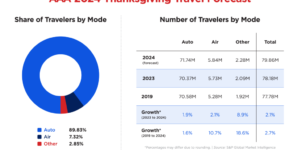How insurers price personal auto and homeowners policies is fair, according to most Americans, but nearly half (47 percent) said paying for coverage was a challenge, a newly-released Insurance Research Council (IRC) survey found.
Those surveyed felt personal auto insurers are being fair with policyholders when policy pricing is based on a driver’s previous traffic violations (85 percent), their claims-filing history (76 percent) and on information derived from telematics devices (75 percent).
Less than half of survey respondents felt it was fair for personal auto insurers to use a driver’s level of formal education (45 percent), gender (42 percent), and marital status (41 percent) when pricing a policy. Out of 14 rating variables, those three were the only ones that did not secure majority support among survey respondents.
“Survey data shows overall positive attitudes toward rating variables, with variations across demographics,” the IRC’s report, “Public Perceptions Regarding the Fairness of Insurance Rating Factors,” stated. “In general, consumers were more favorable toward rating factors that are perceived to be directly related to the risk of the insured property (condition of the home, cost of rebuilding, miles driven, vehicle information, etc.). Consequently, consumers were less likely to rank fair on factors tied to the insured’s personal profile.”
Homeowners insurers’ rating variables received even broader support than those associated with personal auto coverage.
All 19 homeowners rating factors were deemed to be fair by sizable majorities, the IRC survey found.
Homeowners insurers receiving the highest fairness ranking used factors such as safety systems, like smoke detectors, when pricing policies (86 percent).
Considering a home’s overall physical condition (86 percent) and its square footage as well the quality of the home’s roof (80 percent) cumulatively was also considered either very fair or somewhat fair.
Survey respondents didn’t feel as strongly when homeowners insurers used rating variables from a connected device (39 percent), such as a security system, when pricing a policy, indicating it was either very unfair or somewhat unfair.
Having homeowners insurers assess the condition of surrounding buildings (38 percent) and the length of time a policyholder has remained with the same insurer (33 percent) were other factors deemed unfair by a majority of respondents.
“Given how inflation and other factors have driven up the cost of auto and homeowners insurance in recent years, the Insurance Research Council was not surprised to learn that paying for these essential coverages has been a financial burden for a sizable number of Americans,” said Dale Porfilio, president, IRC. (Porfilio is also the chief insurance officer at the Insurance Information Institute.)
“Yet at the same time, consumers expressed widespread support in our survey for the fairness of the rating factors used by insurance carriers to price their auto and homeowners policies,” Porfilio added.
The cost of auto and homeowners insurance was cited as either a major (12 percent) or somewhat major (35 percent) issue among the 1,500 adults asked about its impact on their household budget and who participated in the IRC’s online survey in May 2023, conducted with the assistance of Dynata Inc.





















 Hurricane Wind Speeds Increased by 18MPH Over Past Five Years: Study
Hurricane Wind Speeds Increased by 18MPH Over Past Five Years: Study  Blacks and Hispanics Pay More for Auto Insurance. Study Tries to Answer Why.
Blacks and Hispanics Pay More for Auto Insurance. Study Tries to Answer Why.  Florida Home Sales Decline Amid Hurricane Recovery, Surging HOA and Insurance Costs
Florida Home Sales Decline Amid Hurricane Recovery, Surging HOA and Insurance Costs  New Hampshire High Court Invalidates GEICO Underinsured Claim Provision
New Hampshire High Court Invalidates GEICO Underinsured Claim Provision 